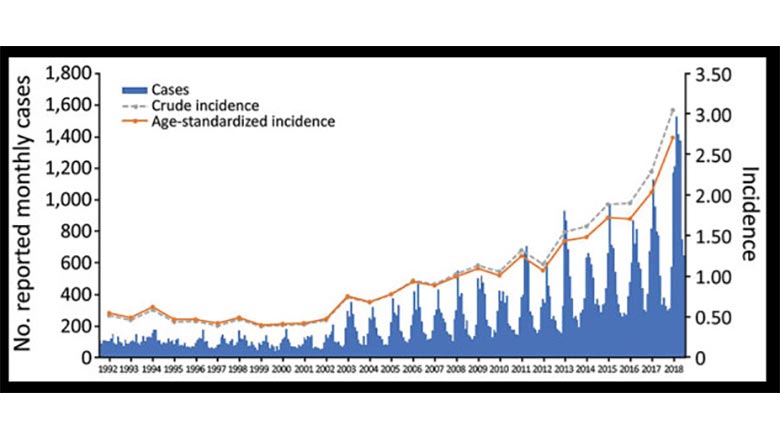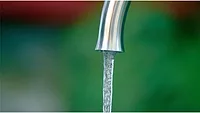James Dipping: Water intelligence: Are you warmer or colder in finding a solution?
Failure to properly monitor and maintain a water system can have a direct impact on a company’s bottom line.

Kenishirotie/iStock/Getty Images Plus via Getty Images.
In my January 2022 column, I made a broad call for improved water intelligence to offer improved building occupant health. This is nothing new to the HVAC industry, with system monitoring and control extending far beyond the mechanical room and into the most remote areas of the building.
If your air temperature changes due to external variables such as heat loss or heat gain from the building exterior, equipment or occupants in the space; there are thermostats at every turn to monitor conditions, provide feedback and allow for the HVAC equipment to react accordingly.
But if your domestic hot water temperature was to change in the distribution network due to similar conditions (such as heat loss, occupant use — or lack of use, etc.), as a building operator, how would you know? Does the building you manage have the capability to monitor and report these changes? And if it does — is the water system able to react and adjust to make sure set points are maintained?
Temperature: Watch where you watch
During my 20-plus years in the industry, it has been my experience that domestic water distribution systems most commonly monitor temperatures at these locations:
- Water heating equipment inlet/outlet;
- Master mixing valve inlets and outlet; and
- Hot water return pump.
What’s the common denominator to all of these? They are all typically located in the building’s mechanical room. There is no temperature monitoring happening across the actual system network.
And when we look at how a domestic water plumbing system operates, it can be both a closed and open system. Considering the large number of variables in play, it is mind-boggling to me that there is no knowledge of what is going on outside the mechanical room.
For the typical HVAC system, we know what happens when the air supply deviates from a set point: Occupants will either get hot or cold. In most cases (barring special situations found in health care, laboratory or other specialized environments), I would argue fluctuations in temperature do not result in serious health and safety issues. If you’re chilly, you can always put on a sweater.
When temperature deviates from set point in a domestic water distribution system, however, serious injury can occur. Plumbing engineers work very hard to avoid two specific situations: Scalding and thermal shock. Per The ASSE International Scald Awareness Task Group, scalding is a “thermal injury caused by exposure to hot water. The severity of a scald burn injury depends on both the hot water temperature and the length of exposure to a given hot water temperature.” Thermal Shock is a significant sudden change in temperature from hot to cold, cold to hot, or hot to hotter, that causes a bather to violently react, which generally leads to a slip and/or fall injury.
The solution to this problem, however, presents a different kind of shock: Sticker shock. The plumbing engineering community must overcome client hesitancy to adopt potentially costly solutions Right now, it is standard industry practice to exclude water monitoring outside of the mechanical room. As engineers look to incorporate safer and more energy-efficient solutions into designs, they must be ready for the anticipated pushback related to cost. Plumbing engineers must have a ready answer to the question “Why should I spend the money on this when I’ve never needed it before?”
Part of that answer extends well beyond water temperature safety concerns. According to the Centers for Disease Control and Prevention (CDC), 7.2 million Americans get sick every year from diseases spread through water. Cases of Legionnaires’ disease have consistently risen since 2003, and its cause, Legionella bacteria, has become the second most common cause of death for a waterborne pathogen. The risk of waterborne pathogen development in the domestic water system has increased significantly over the years with the introduction of oversized piping, low flow and low flush volume fixtures and increased stagnation and heat loss within the water distribution system.
 Reported cases of Legionella
Reported cases of Legionella
Failure to properly monitor and maintain a water system can have a direct impact on a company’s bottom line in the form of lawsuits. When a company is sued over Legionella, it is really being sued for negligence. Either the company was aware of the danger and did nothing about it or they were ignorant of the hazardous situation because of inadequate safety processes. Both can lead to costly judgments.
Why should a building owner spend money on establishing a water management process and water intelligence system? The answer may be as simple as another question: How can they afford not to?
Where should water monitors be located?
Great question. The more monitoring points you have, the more you know about your building. Conversely, the more monitoring points you have, the more costly this endeavor becomes.
Every building is different, but the objective is the same: Know the temperatures at the far points of your distribution system where water is drawn by building occupants. The following examples illustrate large and medium impact classifications and the immediate effect on end users. (Health care buildings will likely expand on these while buildings such as warehouses will not.)
Large Impact
- Before the first and after the last fixture in vertical cold and hot water risers;
- At the start and end of cold and hot water main runs in a horizontal application (corridor, building wing, etc.);
- At junction points in hot water supply and return system piping (to assist in balancing efforts);
- At the end of branches to fixture large fixture groups;
- Before the first and after the last fixture in fixture groups in high-risk areas such as those used by the public; and
- At the fixture level with intelligent plumbing fixtures.
Medium Impact
- On the outlet side of pressure reducing stations, specifically those that serve pressure zones in high rise applications;
- At water service entry to the building; and
- At the end of branches to fixture groups of 2 or less.
Installing monitors at specific points outside of the mechanical room only gets you so far. Digitizing this information allows for immediate awareness of system performance and allows this data to be logged and stored for record-keeping purposes. The protection to your bottom line is twofold: Your occupants are safer and you have stronger evidence to counter any negligence lawsuit brought against you.
“Most legal actions are civil lawsuits against building owners or their maintenance contractors for negligence or failure to protect guests on their property, a personal injury claim akin to a slip-and-fall case,” lawyers say. With digitization, you can have minute-by-minute data, instead of month-to-month, or year-to-year data. Automated monitoring systems also eliminate the need for dedicated maintenance hours to manually take temperatures at plumbing fixtures throughout the building. This data can be used to in the event of a Legionella lawsuit or can be used to document temperatures if a scalding or thermal shock incident is cited.
We live in a world where data is knowledge — and knowledge is king! Having data available can go a long way in operating a successful water management plan, protecting your building occupants, and protecting your pocketbook.
Looking for a reprint of this article?
From high-res PDFs to custom plaques, order your copy today!









